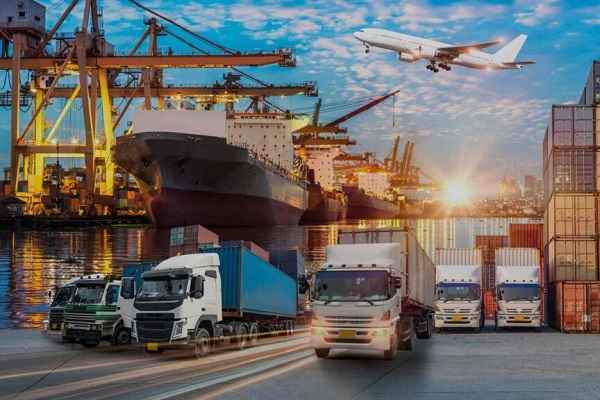How India’s Regional Connectivity Is Enhancing Logistics Performance
India’s rapid infrastructure development and focus on regional connectivity are transforming its logistics sector. With the government’s massive push toward improving roads, railways, inland waterways, and regional airports, the country is making strides toward streamlining cargo movement, reducing costs, and unlocking trade potential—both domestically and globally.
This blog explores how regional connectivity is revolutionizing India’s logistics performance and what it means for importers, exporters, and logistics service providers.
1. The Strategic Importance of Regional Connectivity
India’s geography is vast and varied, which poses unique challenges in transporting goods efficiently. Historically, inefficient road networks and limited multimodal infrastructure caused delays, high fuel consumption, and poor inventory planning. To address this, India is focusing on building integrated transport networks that connect industrial clusters to ports, borders, and markets.
Initiatives like Bharatmala Pariyojana, Sagarmala Project, and the development of economic corridors aim to plug critical infrastructure gaps and improve last-mile connectivity.
🔗 Read about Bharatmala Pariyojana – Ministry of Road Transport & Highways
2. Major Government Initiatives Driving Logistics Efficiency
a. Bharatmala Pariyojana (BMP)
Bharatmala is a flagship highway development project that targets:
-
Economic corridors
-
Border and international connectivity roads
-
Coastal and port connectivity
-
Greenfield expressways
Once complete, it will connect India’s remote and underdeveloped regions with major consumption and manufacturing centers, enhancing freight movement and reducing transit times by up to 25%.
b. Dedicated Freight Corridors (DFCs)
India’s Western and Eastern Dedicated Freight Corridors are exclusive freight railway lines designed to transport cargo faster and more efficiently.
Benefits:
-
Reduced rail congestion
-
Faster cargo movement (average speed of freight trains will increase from 25 km/h to 70 km/h)
-
Increased reliability for time-sensitive shipments
🔗 Learn more about Dedicated Freight Corridors – DFCCIL
c. Sagarmala Project
Focused on port-led development, Sagarmala aims to reduce logistics costs by enhancing connectivity between ports and the hinterland via:
-
Coastal shipping
-
Inland waterways
-
Port modernization
-
Port-industrial cluster linkages
🔗 Sagarmala Program – Ministry of Ports, Shipping and Waterways
3. Enhancing Multimodal Logistics
Improving regional connectivity isn’t just about roads—it’s about integrating rail, road, air, and waterways into a seamless supply chain ecosystem. India’s Multimodal Logistics Parks (MMLPs) and PM Gati Shakti Master Plan are designed to make multimodal transport a reality.
Multimodal Logistics Parks (MMLPs)
These parks act as consolidation hubs, providing warehousing, cold storage, and transportation facilities, reducing dwell time and improving inventory management.
Key benefits:
-
Lower freight costs
-
Reduced inventory carrying costs
-
Better modal mix (road, rail, water)
-
Enhanced visibility and tracking
🔗 MMLP Overview – NHAI Logistics
4. Boost to Regional Air Cargo Infrastructure
The Indian government has invested heavily in regional airport infrastructure under the UDAN (Ude Desh ka Aam Nagrik) scheme to connect tier-2 and tier-3 cities to major economic hubs. This is critical for:
-
E-commerce fulfillment
-
Perishable goods transport
-
Just-in-time (JIT) delivery models
Regional air cargo terminals are now operational in cities like Indore, Raipur, Coimbatore, and Guwahati, shortening delivery timelines and reducing dependency on metro hubs.
🔗 UDAN Scheme – Airports Authority of India
5. Role of Inland Waterways in Connectivity
India has over 14,500 km of navigable waterways, and with the National Waterways Act, the government is leveraging this natural asset to reduce logistics costs.
Key waterway routes:
-
National Waterway-1 (Ganga): Haldia to Varanasi
-
NW-2 (Brahmaputra): Assam and the Northeast
-
NW-3 (West Coast Canal): Kerala
Waterways offer eco-friendly and low-cost freight solutions, especially for bulk cargo, contributing to sustainable logistics.
🔗 Inland Waterways Authority of India (IWAI)
6. Regional Industrial Clusters and Logistics Synergy
Regional connectivity enables linkage of production clusters with logistics hubs. For example:
-
Delhi-Mumbai Industrial Corridor (DMIC) leverages both road and DFCs to enhance export-readiness.
-
Chennai-Bengaluru Industrial Corridor (CBIC) links manufacturing centers with ports via expressways and rail.
-
Eastern states like Odisha, Jharkhand, and Bihar are getting better rail-port linkages for mineral exports.
These corridors make India’s logistics environment more predictable, efficient, and globally competitive.
7. How Indian Agents and 3PLs Support Regional Logistics Integration
Third-party logistics (3PL) providers and local sourcing agents play a vital role in helping businesses navigate India’s regional logistics ecosystem.
They assist with:
-
Route optimization
-
Regional warehousing selection
-
Compliance with state-wise logistics laws
-
Multimodal coordination
-
Return and last-mile delivery services
🔗 India-Agent.com – Logistics & Sourcing Support in India
8. The Impact on Trade and Supply Chain Efficiency
Thanks to regional connectivity improvements, businesses now enjoy:
-
Lower logistics costs: India aims to reduce logistics costs from ~14% of GDP to 8-9%, on par with global standards.
-
Faster turnaround times: From warehouse to port or port to consumer.
-
Increased reliability: Especially for manufacturing and perishable sectors.
-
Greater export competitiveness: Faster and cheaper logistics make Indian exports more appealing globally.
Conclusion: A New Era for Indian Logistics
India’s commitment to improving regional connectivity is unlocking unprecedented logistics potential. As new expressways, freight corridors, and multimodal parks come online, businesses across sectors—from manufacturing to retail—will benefit from faster delivery, lower costs, and broader market access.
For companies looking to enter or scale in India, understanding and leveraging this connectivity is crucial. Partnering with experienced Indian agents and logistics providers ensures smoother navigation of the complex yet evolving transport ecosystem.
